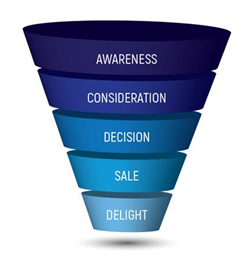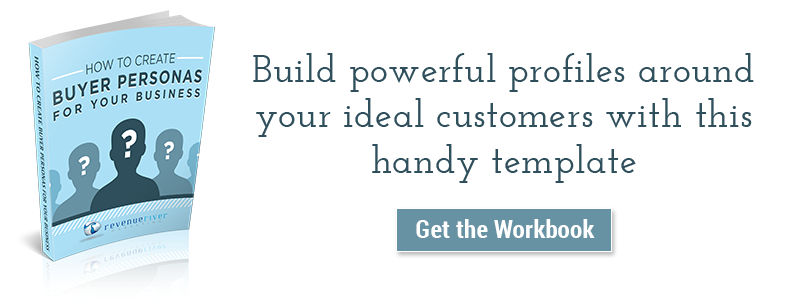
For a successful content marketing strategy, you need to understand both the buyer's journey and your target audience. Seems simple enough, right? However, only 30% of marketers say they see their content marketing as “effective.” This is pretty alarming considering content marketing provides some of the highest ROI when compared to other marketing efforts, due to its minimal upfront cost and the longevity of content. Are you seeing the disconnect between your audience and content, thus a slump in your ROI? Well, let’s start off with the basics.
Your target audience can be defined by your buyer personas or the “semi-fictional representation of your ideal customer” that’s based on research and some professional judgment. These personas allow you to direct your energy towards the right audience that will, in turn, get the most value from your messaging. Now the infamous buyer’s journey. This is typically depicted as a three-tiered funnel that guides people through their decision-making process leading up to a purchase. The three stages are:
- Awareness – This stage is mostly focused on buyers educating themselves about their problem.
- Consideration – People begin to research potential solutions to their problem. This is where engagement and trust-building come into play so they see you as a contender!
- Decision – Finally, it’s time to pull the trigger and become a customer.
Though the funnel has been around for some time, many marketers are in agreement that buyers don’t follow such a linear process. Depending on their experience with your brand, people build loyalty and ultimately end up following more of a marketing and sales “loop” if you will. To account for this, we depict the funnel by adding a couple of steps:

If you haven’t picked up on it yet, at Revenue River we take a thorough approach to strategically map content to the buyer’s journey so the target audiences we work with get the most value across all stages. There are two steps that are critical to successfully do this.
- Develop a brand communication guide. One of the first things that we do is build out a brand communications guide that comprehensively captures our clients’ brand. The guide includes aesthetic aspects but also focuses extensively on messaging. We work through things like our clients’ value proposition, buyer personas, and tone of voice to truly understand target audiences and how a brand can meet their needs.
- Strategically analyze the buyer’s journey. We specifically lay out our entire marketing strategy to guide personas through the various stages of a buyer’s journey. It is vital to consider what information you can give prospects to educate them about their pain points and about potential solutions (ahem, the awareness stage). We also consider how our clients can build a relationship with prospects by nurturing and engaging them with content (consideration). Next, we move onto the value our clients provide their prospects that reinforces the fact that our client is the right choice when they reach the decision stage. Last but certainly not least, we look at loyalty and delight to consider the opportunities customers have to refer and renew. After all, word-of-mouth is one of the most powerful marketing strategies!
Strategically aligning content across the buyer’s journey is essential so your target audience gets the most value from your messaging. While it might seem like a ton of work doing so isn’t overwhelming as long as you have practices in place to guide your content strategy. However, if you’re still feeling underprepared or frustrated, we’re here to help you through the process.

